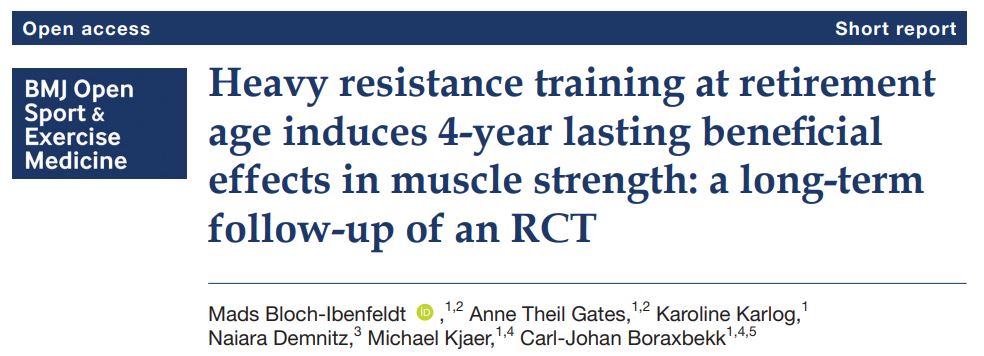An RCT published by Bloch-ibenfeldt et al.1 set out to explore the long-term effects of heavy resistance training in retirement age adults. 369 participants (61% women, mean age 71 years) were randomized to one year of heavy resistance training (HRT), one year of moderate-intensity resistance training (MIT), and a non-exercising control group (CON). The primary outcome measure was leg extensor power, secondary outcome measures were maximal isometric quadriceps torque, and body composition via DXA scan. The researchers gathered these measures at baseline, 1 year following the intervention (or control), then at 2 and 4 years.
10,000 Foot View
Those in the heavy resistance training group maintained baseline performance in isometric leg strength at 4 years, while those in the moderate-intensity resistance training group and control group did not. This implies that heavy resistance training for older adults can make a lasting impact, helping to preserve muscle function for a long period of time. Heavy loads are preferred over moderate loads to make long-lasting preservation in muscle.
More Context/Details if You’re Interested
It is well established that decreases in muscle mass with age is associated with higher risk of all-cause mortality2 (i.e. dying by any cause). Essentially people with more muscle are harder to kill and live longer. Below are the results from the study.


- Bloch-Ibenfeldt M, Theil Gates A, Karlog K, Demnitz N, Kjaer M, Boraxbekk CJ. Heavy resistance training at retirement age induces 4-year lasting beneficial effects in muscle strength: a long-term follow-up of an RCT. BMJ Open Sport Exerc Med. 2024;10(2):e001899. Published 2024 Jun 18. doi:10.1136/bmjsem-2024-001899
- Westerterp KR, Yamada Y, Sagayama H, et al. Physical activity and fat-free mass during growth and in later life. Am J Clin Nutr. 2021;114(5):1583-1589. doi:10.1093/ajcn/nqab260

